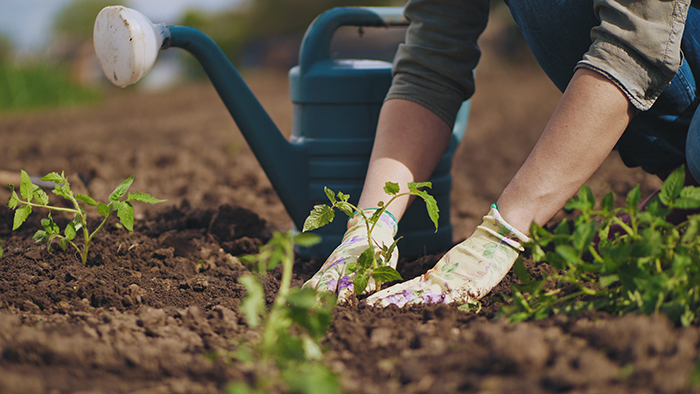June 6, 2023
How to make a vegetable garden: 5 steps to follow
A vegetable garden requires good planning. Here’s a quick 5-step guide to creating and maintaining a vegetable garden that maximizes your harvest.

Find the best location
- There are several veggie garden models available, including in-ground, raised beds (an increasingly popular option because you don’t have to kneel down to care for your plants), large pots and hanging planters, etc. If you hang pots from the balcony, check how solid and secure they are to avoid accidents. Many ideas for vegetable gardens can be found simply by searching for images online.
- Choose an area sheltered from the wind that gets the most sunshine (6 to 8 hours, preferably) with a north-south orientation.
- For an in-ground garden, consider creating a border to prevent the lawn or weeds from invading.
Plan out your vegetable garden
- Make a list of what you would like to grow. The easiest vegetables include tomatoes, cucumbers, radishes, lettuce, beans, beets, peas, and ground cherries.
- Find out what’s unique to each variety of vegetable, like when to sow/plant, how to space seedlings, their hardiness zones, sowing/planting depth, how much to water, etc.
- Plan out your garden to determine how many seedlings to sow and the desired layout. Remember to plant things that grow taller to the north so that they don’t create shade for smaller plants.
- The companion technique involves planting two plants that protect each other, thus limiting the use of toxic repellents. For example, basil acts as a repellent for some tomato-loving insects.

Plant your vegetables
- Before planting, make sure to prepare the soil. Add soil that is rich in essential minerals and mix compost into it. Ask the garden centre for advice. They will be able to guide you.
- Choose hardy plants by checking their sunlight requirements and their hardiness zone. Hardiness is a rating that assesses the plant’s ability to tolerate frost. You need to know which hardiness zone you live in to make the right choices.
- Plant your fruits and vegetables in the morning and water them well. Avoid watering on very hot days.
- Make sure plants are not too close together. They need space to thrive.
Taking care of your vegetable garden
- Add organic fertilizer after a few weeks. Plants need nutrients.
- Protect your garden from rodents and birds by using simple things like netting, hanging aluminum plates, etc.
- Water in the morning, before the sun gets too intense, and avoiding water on the foliage. We suggest watering roughly twice a week.
Growing your own veggies is a great way to ensure your plates are bursting with green goodness come harvest time! Bon appétit!
Are you passionate about real estate? Subscribe to the Centris.ca newsletter now.
See also:
4 tips for sowing grass in spring
 The Largest Number of Homes for Sale
The Largest Number of Homes for Sale



